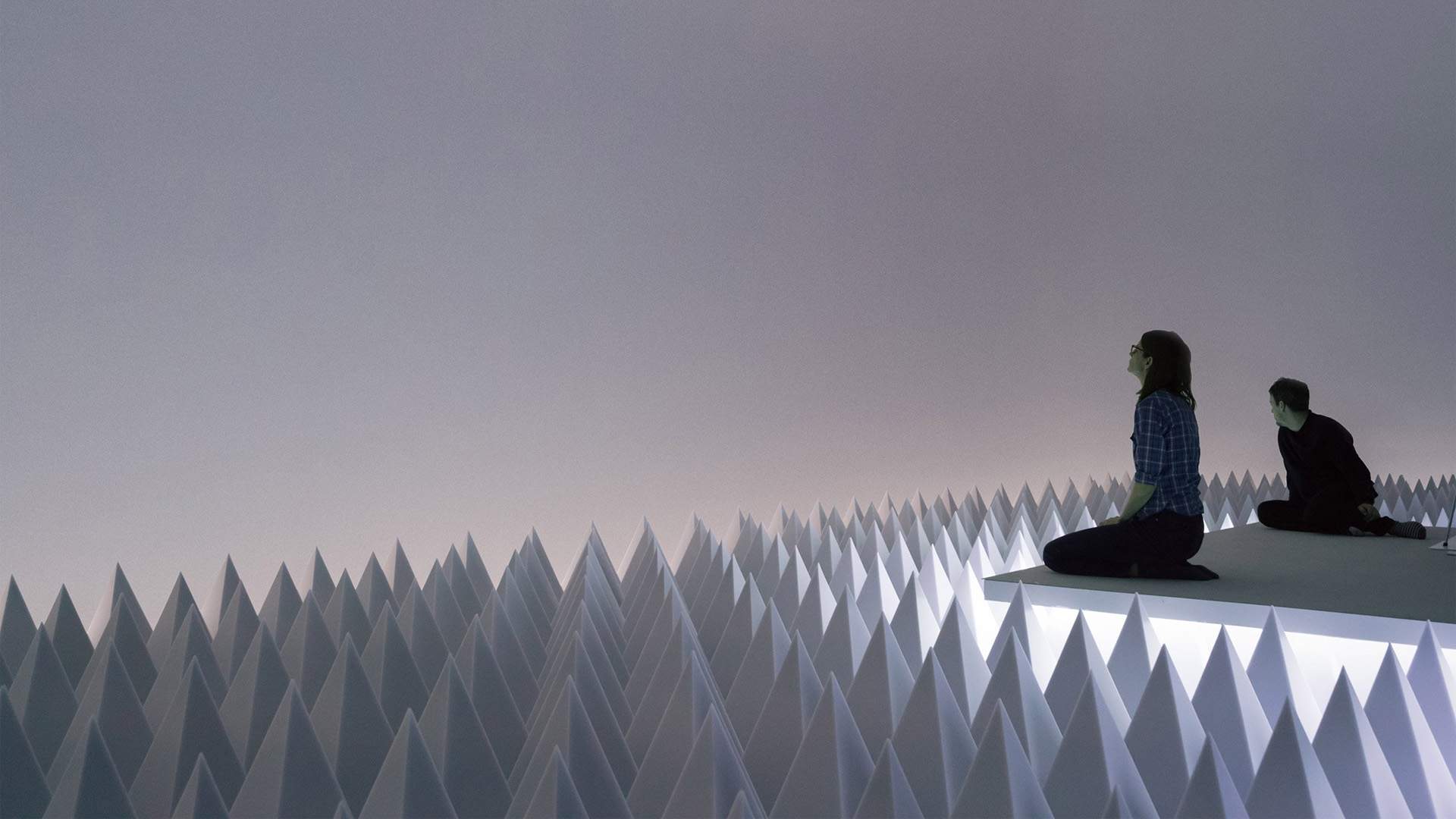The Guggenheim Has Just Unveiled Its Stunning Synthetic Desert Installation
Visitors step into a sea of sound-suppressing foam pyramids in an artwork designed to "heighten our understanding of perceptual experience."
For most of us, bringing the outdoors inside is interior decorating speak for putting a few plants around your apartment. For artist Doug Wheeler, it has been a life-long ambition. Growing up in Arizona and spending time standing in the US state's vast desert landscape, he conceived of an idea for a group of installations that would mimic that experience — and, almost five decades after he put his plans down on paper, one has finally become a reality.
Inside New York's Guggenheim Museum, Wheeler has transformed the gallery into an abstract synthetic dessert. Don't just take our word for it — PSAD Synthetic Desert III is the name of the piece. After moving through a number of chambers that can only be unlocked by staff, visitors walk into a room filled with sound-absorbing foam pyramids as far as the eye can see. A platform sits in the middle, ensuring everyone who enters is surrounded by the eye-catching structure, with lighting and sound design also crafted to make the space as immersive as possible.
Indeed, because Synthetic Desert "is best experienced with as few extraneous sounds and distractions as possible," according to the Guggenheim website, only five people can enter the free exhibition at any one time. Visits are limited to either ten or twenty minutes of gazing into the sea of white shapes and ponder space, landscape and whatever else pops into your mind when you're sitting in silence in a room filled with foam spikes.
After first turning his vision into sketches back in 1968, and spending much of his career contemplating light and space, Wheeler piece aims to "produce a hermetic environment based on a radical reduction of optical and acoustical sensation" in order to "heighten our understanding of perceptual experience." Anyone that happens to be in New York between now and August 2 is advised to book in advance, with entry free with museum admission, because this unique and beautiful installation is certain to be popular.
Via Artnet. Image: David Heald





